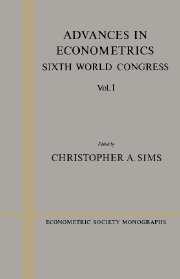3 - Recursive linear models of dynamic economies
Published online by Cambridge University Press: 05 January 2013
Summary
INTRODUCTION
This chapter describes a setup within which dynamic stochastic competitive models can quickly and inexpensively be formulated and analyzed. This kind of model is used in macroeconomics and finance to build theories about how variables like consumption, investment, asset prices, and interest rates covary over time, and how their evolution is to be interpreted in terms of parameters governing preferences, technology, and information flows. The idea here is to rig a class of economic environments with descriptions of preferences, technologies, and information structures that occur in the form of a set of matrices. By naming a particular list of matrices, we completely specify an economic environment. Given these matrices, we supply a set of easy to use computer programs that compute and characterize the competitive equilibrium prices and allocation. The class of models is specified so that an equilibrium can be represented as a state space system in which the state vector evolves according to a first-order linear vector stochastic difference equation. This feature emerges because the models assume quadratic preferences and linear technologies and information structures. The linearity of the equilibria enables us to characterize them in terms of standard objects of time series econometrics. Thus, given a representation of our equilibrium in state space form, it is straightforward to deduce both impulse response functions with respect to the innovations impinging on agents' information sets and vector autoregressive or Wold representations for any subset of variables linearly related to the state vector. It is also possible to analyze the effects of aggregation over time and various sources of measurement error.
- Type
- Chapter
- Information
- Advances in EconometricsSixth World Congress, pp. 97 - 140Publisher: Cambridge University PressPrint publication year: 1994
- 2
- Cited by

